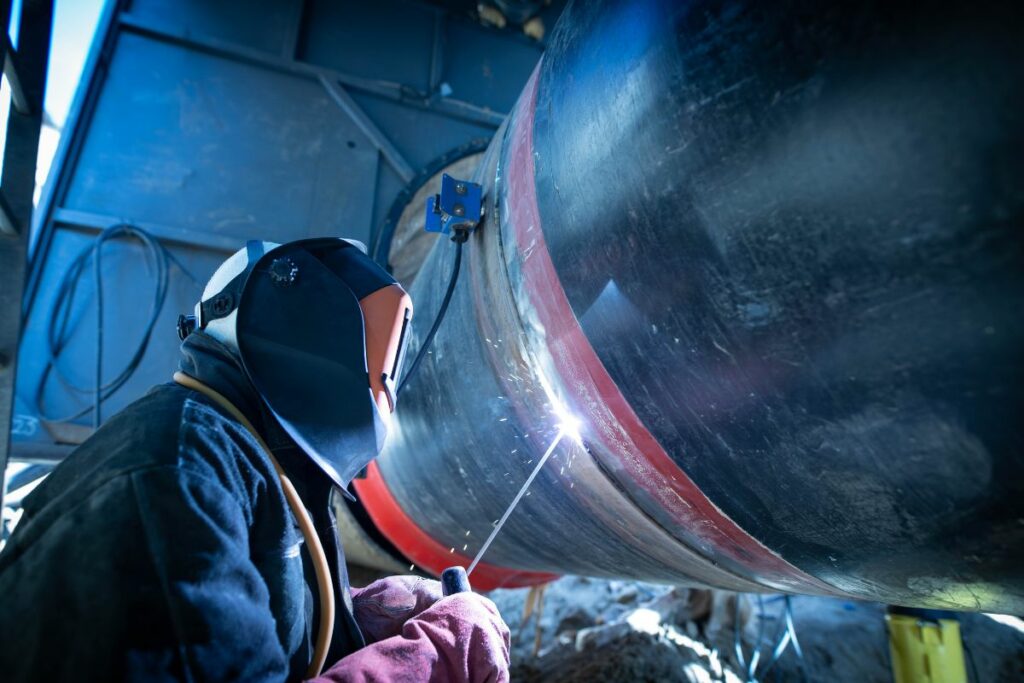
The aerospace industry is known for its groundbreaking innovations and technological advancements. From pioneering flights that defied gravity to exploring the vastness of space, aerospace engineers and scientists continuously push the boundaries of what is possible. At the heart of these remarkable achievements lies a crucial process: welding. Welding plays a vital role in the construction and maintenance of aerospace vehicles, ensuring their structural integrity and reliability.
Welding is a practice used in most industries; from shipbuilding, to automotive, to the entertainment industry. However, in the aerospace industry, welding reaches new levels of precision and complexity. The requirements placed on aerospace vehicles demands welds that are exceptionally strong, lightweight, and resistant to extreme conditions.
One of the primary challenges in aerospace welding is the selection of appropriate materials. Aerospace vehicles are subject to extreme temperature fluctuations, high stress loads, and corrosive environments. To withstand these conditions, materials such as aluminum, titanium, and advanced high-strength steels are commonly used. However, these materials can be notoriously difficult to weld due to their unique properties.
The aerospace industry relies heavily on a specialized welding technique known as Tungsten Inert Gas (TIG) welding. TIG welding uses a non-consumable tungsten electrode and an inert gas, typically argon, to shield the weld area from atmospheric contamination. This technique provides exceptional control over the welding process, allowing aerospace welders to achieve precise and high-quality welds.
In addition to TIG welding, other advanced welding processes are employed in the aerospace industry. One such process is Electron Beam Welding (EBW), which utilizes a focused beam of high-velocity electrons to melt and fuse the metal. EBW offers deep penetration, minimal heat-affected zones, and excellent weld quality, making it ideal for aerospace applications where strength and precision are paramount.
Moreover, Laser Beam Welding (LBW) has gained popularity in aerospace manufacturing. LBW employs a concentrated laser beam to melt the metal and create a weld. This process offers high welding speeds, narrow heat-affected zones, and reduced distortion, making it suitable for joining thin and delicate aerospace components.
The welding of aerospace structures requires meticulous planning and stringent quality control measures. Each weld must undergo rigorous testing and inspection to ensure its integrity. Non-destructive testing techniques, such as X-ray inspection, ultrasonic testing, and dye penetrant inspection, are employed to detect any defects or inconsistencies in the welds. This meticulous attention to detail ensures that the welds meet the stringent safety standards demanded by the aerospace industry.
Aerospace welding also plays a critical role in repair and maintenance. Over the lifespan of an aircraft or spacecraft, various components may require repair or replacement. Welding techniques are employed to restore damaged parts, extend their service life, and maintain the structural integrity of the vehicle. Skilled welders meticulously analyze the damaged areas, select appropriate welding methods, and execute precise repairs to ensure the vehicle’s continued airworthiness.
Looking ahead, the future of aerospace welding is poised to witness further advancements. As the industry explores new frontiers and interplanetary missions, the demand for welds that can withstand even greater stresses and extreme conditions will increase. Researchers are continually developing innovative welding techniques and materials to meet these evolving challenges. Emerging technologies, such as friction stir welding and additive manufacturing, hold the potential to revolutionize the aerospace welding landscape, offering enhanced efficiency, reduced weight, and improved structural performance.
Welding is a crucial component of aerospace manufacturing and maintenance. It enables the construction of strong, lightweight, and durable structures that can withstand the demands of flight. Through the utilization of advanced welding techniques and meticulous quality control measures, aerospace welders ensure the safety and reliability of aircrafts and spacecrafts. As the aerospace industry continues to soar to new heights, welding will remain an essential pillar of its success, propelling us up, up, and away into the future of aerospace exploration.